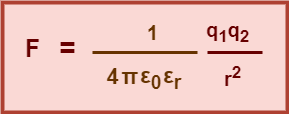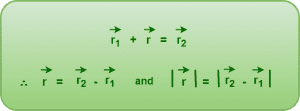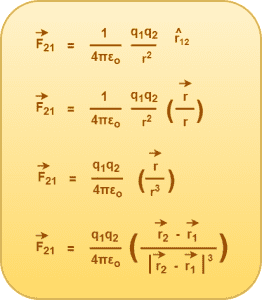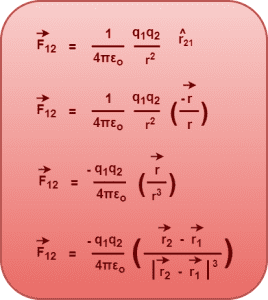Coulomb’s Law-
Before you go through this article, make sure that you have gone through the previous article on Coulomb’s Law.
We have learnt-
- Coulomb’s Law helps to calculate the magnitude of electric force between the two stationary point charges.
- By Coulomb’s law, the the magnitude of electric force between the two charges is calculated as-

In this article, we will learn about Coulomb’s Law in Vector Form.
Coulomb’s Law In Vector Form-
Let q1 and q2 be two like charges placed at points A and B respectively in vacuum as shown-

Using triangle law of vector addition, we have-

The coulomb’s force F21 acting on charge q2 due to charge q1 is given by-

Equation-01
The coulomb’s force F12 acting on charge q1 due to charge q2 is given by-

Equation-02
Equations-01 and 02 gives Coulomb’s law in vector form.
Importance of Vector Form-
The vector form of Coulomb’s law gives the following additional information-
1. F12 = – F21. This means that the two charges exert equal and opposite forces. So, Coulombian forces obey Newton’s third law of motion.
2. As the Coulombian forces, F12 and F21 act along the line joining the centers of two charges, so they are central forces.
NOTEIf we put q1 and q2 with proper signs in equations-01 and 02, then the direction of forces automatically gets adjusted. |
Read the next article on-
Electric Force | Definition | Properties
Get more notes & other study material of the Chapter Electric Charges & Field.

